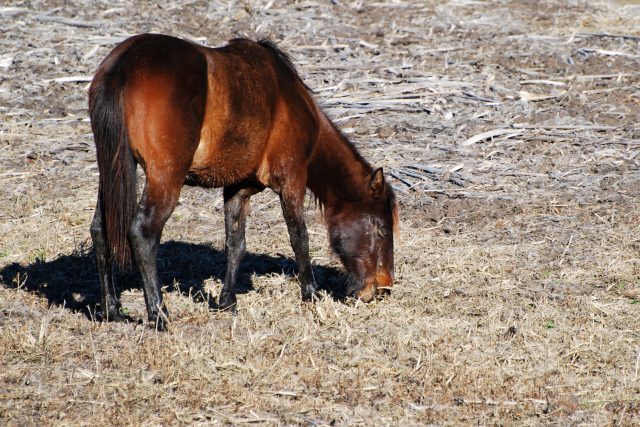Type the name of the breed you're looking for below
[wpdreams_ajaxsearchlite] Don't see the breed your're looking for? Click here and let us know!
Florida Cracker horse
| Country Of Origin | United States |
| History and Background | The Florida Cracker Horse, like the cattle breed of the same name, traces its ancestry to Spanish stock brought to Florida in the 1500's when discovered by Spain. Preparing to return to Spain, the Spanish left some of their cattle, horses and hogs to make room for their collected treasures. The genetic heritage of the Cracker Horse is derived from the Iberian Horse of early sixteenth century Spain and includes blood of the North African Barb, Spanish Sorraia and Spanish Jennet (gaited). Its genetic base is generally the same as that of the Spanish Mustang, Paso Fino, Peruvian Paso, Criolla and other breeds developed from the horses originally introduced by the Spanish into the Caribbean Islands, Cuba and North, Central and South America. The free roaming Cracker Horses evolved over a long period of time by natural selection. They were molded and tempered by nature and a challenging environment into horses that ultimately were to have a large part in the emergence of Florida as a ranching and general agriculture state. The horses also played an important role in the life of the Seminole Indians. Florida cowmen were nicknamed "Crackers" because of the sound made by their cow whip cracking the air. This name was also given to the small agile Spanish Horse essential for working Spanish cattle. Over the years, Cracker Horses have been known by a variety of names: Chicksaw Pony, Seminole Pony, Marsh Tackie, Prairie Pony, Florida Horse, Florida Cow Pony, Grass Gut and others. The Cracker Horse suffered a reversal of fortune in the 1930's. The Great Depression led to the creation of a number of relief programs, one of which encouraged the movement of cattle from the Dust Bowl into Florida. With the cattle came the screwworm, which, in turn, led to changes in the practices followed in raising cattle. Before the screwworm, cowmen used these horses to herd and drive the free roaming Scrub cows and Cracker cows; with the arrival of the screwworm came fencing and dipping vats and the need to rope cattle and hold them for treatment. As a result, ranchers turned to the larger, stronger Quarter Horse, and the Florida Cracker Horse lost its demand and became quite rare. The breed's survival over the last fifty years resulted from the work of a few families who continued to breed Cracker Horses for their own use. It was these ranching families and individuals whose perseverance and distinct bloodlines that kept the Cracker Horses from becoming extinct. The family names include the Ayers, Harvey, Bronson, Matchett, Partin and Whaley names. |
| Use Today | Ranch work, Pleasure animal, Show horse, Eventing horse |
| Height | 13.2 to 15 hands (54 to 60 inches, 137 to 152 cm) |
| Colour | Any colours and patterns |
| Characteristics | The Florida Cracker Horse is also known as the Chickasaw Pony, Seminole Pony, Prairie Pony, Florida Horse, Florida Cow Pony and Grass Gut. The modern breed retains the size of its Spanish ancestors, standing 13.2 to 15 hands (54 to 60 inches, 137 to 152 cm) high and weighing 750 to 1,000 pounds (340 to 450 kg). They are found mainly in bay, black and gray, although grullo, dun and chestnut are also seen. Roan and pinto colours are occasionally found. They have straight or slightly concave profiles, strong backs and sloping croups. They are known for their speed and agility and excel at trail and endurance riding, and are also used extensively as stock horses. They are sometimes seen in Western riding sports such as working cow horse, team roping and team penning. The Florida Cracker is a gaited horse, with the breed association recognizing two gaits, the running walk and amble, in addition to the regular walk, trot, canter and gallop. The single-footed ambling gait is known as the "coon rack" by some breed enthusiasts. The foundation genetics of the breed are the same as many others developed from Spanish stock in North and South America, including the Paso Fino, Peruvian Paso and Criollo. The Cracker horse is very similar in type and genetics to the Carolina Marsh Tacky and the Banker horse, both Spanish-style breeds from the eastern United States, but DNA testing has proven that these are separate breeds. |
| Personality and Temperament | Calm, docile, willing and able. |



